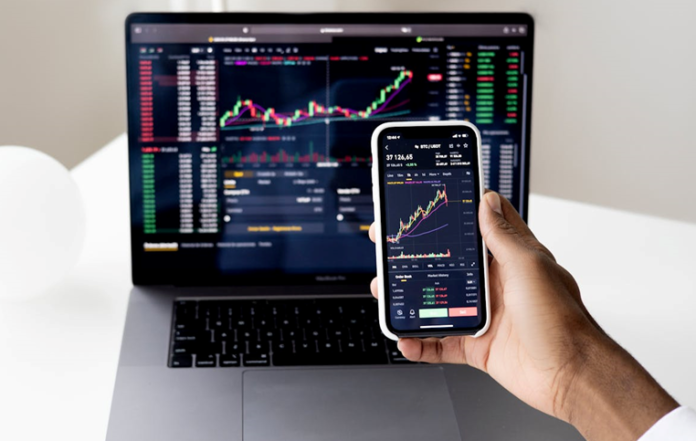You may not understand some aspects unless you have been in business. However, the bottom line is that persistence is among the many success factors in the dynamic business environment. Examples of businesses and individuals who have faced adversity and succeeded serve as inspiration and learning opportunities.
So, if you are facing challenges in business, you are not alone. Grind harder. This piece might serve as a reminder of how innovators should embrace failures and use them as proof of success.
We know many success stories about companies but have never considered their appearance before attaining international recognition. For examples, look at master papers – best website to write my paper, brands like Toyota, Alibaba, and Starbucks, among others. They all have a story you would like to hear. In business, everything is not in black and white.
This piece is a collection of stories of new businesses that evolved to meet changes in the market. You will also find corporate giants that restructured to remain competitive to the entrepreneur weighed down by personal and financial crises. In essence, they are classic examples illustrating that companies can overcome adversity.
SpaceX: Overcoming Launch Failures
In 2002, SpaceX started its business and suffered three consecutive launch failures in its first six years from 2006 to 2008, almost leading to its closure.
The Turnaround
Musk had to invest his resources to keep the company afloat. The fourth launch of 2008 was successful, and NASA gave SpaceX a $1. 6 billion contract not long after.
The Outcome
SpaceX has become a major player in aerospace technology with its reusable rockets and plans to colonize Mars. The fact that it kept trying again after failing many times demonstrates the need for persistence and vision in developing innovative products.
Airbnb: From Near Collapse to Worldwide Success
Brian Chesky, Joe Gebbia, and Nathan Blecharczyk tried to introduce their idea of room renting in 2008. They did not have the right business model and ran out of cash, but these founders did not give up.
The Turnaround
For their primary source of income during the 2008 presidential election, they sold cereal boxes and made $30000. This allowed them to survive and participate in Y Combinator to focus on their business model.
The Outcome
In today’s market, Airbnb is a billion-dollar company that offers quality and comfortable accommodation at affordable rates for travelers and tourists. It is a good illustration of how creativity can outlive economic hardship.
Starbucks: A Comeback Story
Starbucks experienced declining sales and store closures during the 2008 global financial meltdown.
The Turnaround
In 2008, Howard Schultz once again became the CEO of Starbucks. Under his leadership, Starbucks closed the least profitable stores and started focusing on customer experience and new products.
The Outcome
Nothing is totally lost when you can still work on it. For instance, Starbucks recovered. It is one of the world’s most iconic brands. A few lessons we can pick is the effectiveness of decision-making and quality.
Netflix: From DVDs to a Streaming Pioneer
Netflix struggled against Blockbuster and other rental services. In 1999, streaming technology also threatened Netflix’s DVD rental model.
The Turnaround
2007 became a game changer. It rose to become a streaming service and heavily invested in technologies and original content.
The Outcome
Netflix is currently one of the largest entertainment distributors in the world. Its emphasis on original series and movies has kept it a float because it meets the market demands.
Apple: Bouncing Back With Steve Jobs
Apple was heading towards bankruptcy in mid 1990s because of a lack of innovative and creative products and an unclear future strategy.
The Turnaround
In 1997, Steve Jobs returned to Apple when it was in trouble. He did a simple, yet strategic move. He first simplified the product target, then invested in innovation, and launched revolutionary products such as the iMac, iPod, iPhone, and iPad.
The Outcome
Apple’s turnaround under Jobs made the company one of the world’s most valued and innovative companies today.
General Motors: Surviving Bankruptcy
On the other hand, GM went bankrupt in 2009 due to huge debts and declining sales during the financial crisis.
The Turnaround
The government helped GM consolidate its brands and invest in innovations like EVs.
The Outcome
GM recovered and paid back their government loans and made a profit. The story of their return is a good case study demonstrating how changes and innovations can help a declining company.
IBM: Reinventing Through Technology
At the face of change, many things happen and IBM was among establishments that suffered dramatic losses. It was because the tech industry was evolving at an unprecedented rate in 1990s.
The Turnaround
By selling odd commodity hardware, Lou Gerstner transformed IBM by focusing on high-profile services and software.
The Outcome
IBM became a successful IT services and consulting company. Their strategic decision shows the significance of responding to market changes and concentrating on high-profit markets.
IBM’s success led to the establishment of multiple online service companies to assist individuals in conveniently sorting their needs. For instance, you can shop and have anything delivered to your doorstep, buy an essay at your study table, or take virtual trips while in your living room. In essence, we are enjoying the sweat of those who did not give up.
Marvel: The Amazing Transformation From Bankruptcy to Blockbusters
The Challenge: The comic book industry entered a decline when Marvel Comics filed for bankruptcy in the mid-1990s due to poor comic book sales and poor business management.
The Turnaround
Marvel licensed its characters for movies and started the Marvel Studios; its movies include Iron Man and Avengers.
The Outcome
Marvel became an entertainment behemoth before being acquired by Disney. Their reemergence demonstrates the value of recycling and repurposing their main assets.
Twitter: Surviving Internal Turmoil
Twitter also struggled internally with executive turnover and its inability to make money or grow its user base.
The Turnaround
User interaction was a problem and the return of CEO Jack Dorsey saved the mess. He also developed new features to meet the market demands.
The Outcome
Twitter is currently a significant social media site in the world. It has withstood internal and external challenges to serve its clients excellently.
From these stories, the biggest lesson we can acquire revolve around innovation, strategic shifts, and perseverance. They are vital to making a difference. They teach us that failure is just a transitional phase to success.






























